After seven years of threatening, I finally made it down to the very attractive town of Bradford on Avon, some 10 miles from Bath, for a game at Cumberwell Park. My main goal was to see the newest addition to the club, the Orange nine. I recall being impressed by photos many years ago and I especially liked the idea of building a course on a landfill site. Of course, a bi product of landfill is few trees, not at all an issue for me

One hears the word landfill and immediately assumes the area will be visually marred; not so. For the most part, the routing provides exhilarating views of rolling Wiltshire Cotswold Hills countryside and the remainder of the 36 hole complex in the valley.
Upon entering the car park my first thought was the place is incredibly busy. This is a stark contrast from the mainly member owned clubs I frequently play which are generally sleepy affairs and offer millionaire golf. The focus on business is quite evident and admirable, however, as is often the case when money is the driving force, the courses were crowded and a slowish game was the result. I suspect golfers are permitted to play any combination of nines because all four opening holes are fairly close to the house. The club also cleverly takes advantage of the central house to allow 9 hole games at a reduced rate.
The opener is quite an easy short four which can be driven from the yellow markers. However, there is a bunker short right of the green that must be contended with if one wants to have a go. The challenging and provocative bunker placement continues throughout the Orange nine and is a model of design.
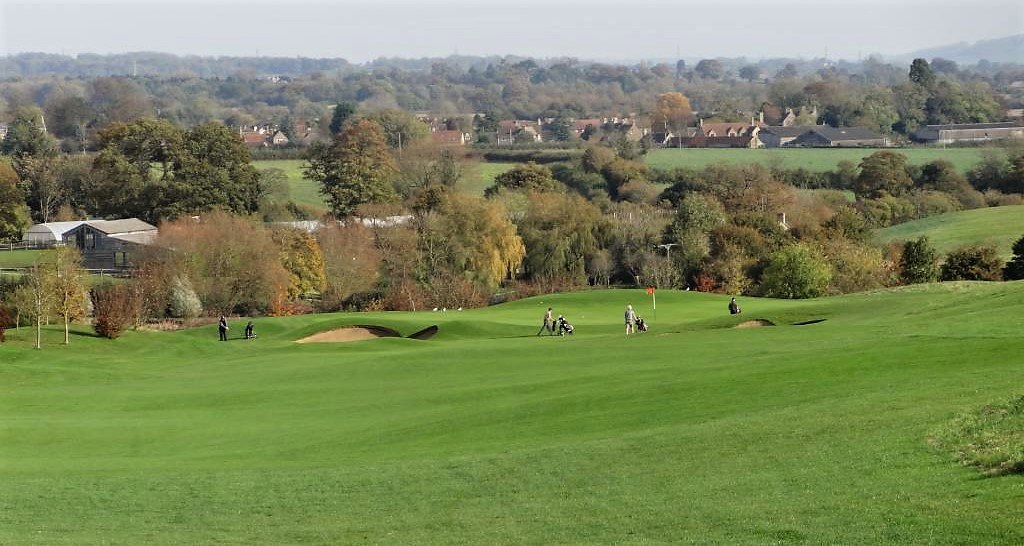
The dead ground behind the right bunker is heightened by a wee dip.
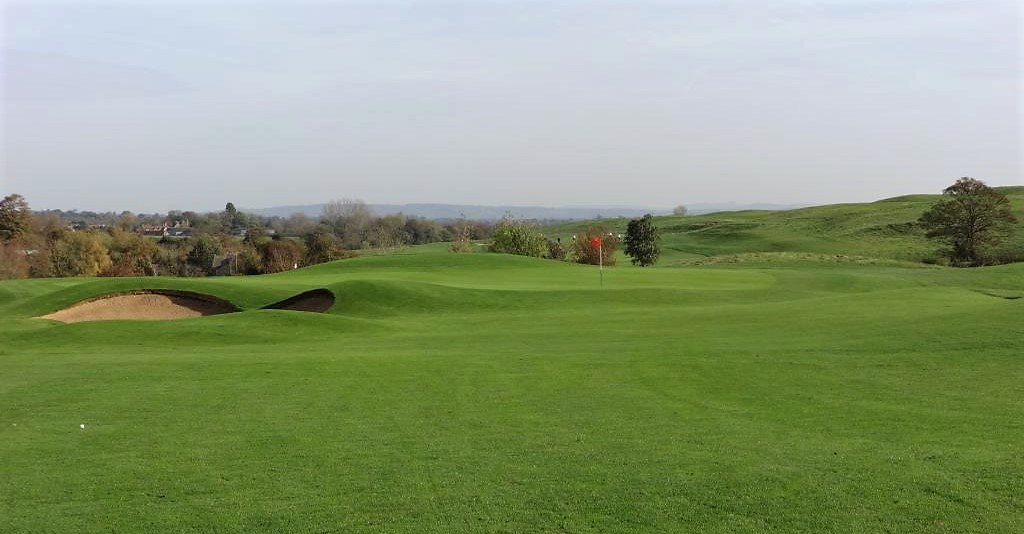
The first short hole is very good, especially with the hole location up front. For those of us with a more rounded version of a flat belly, there is a way to sneak attack the hole location below by playing just right of a centerline knob which wasn't immediately apparent. I did think a safer shot right would be in the hands of a random bounce which could leave one with a longish downhill putt.
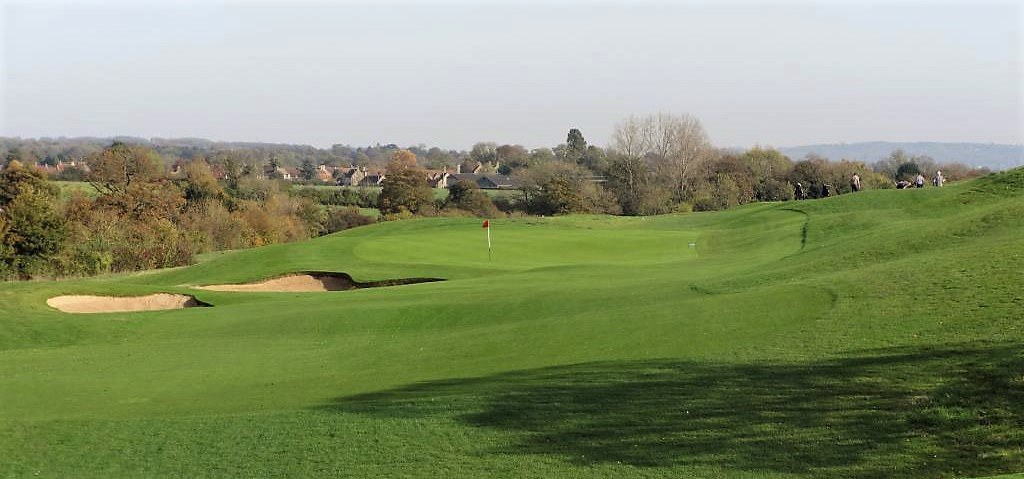
The knob in question is just right of the golfers. I know this is small beer, but its this sort of design which I find most engaging.
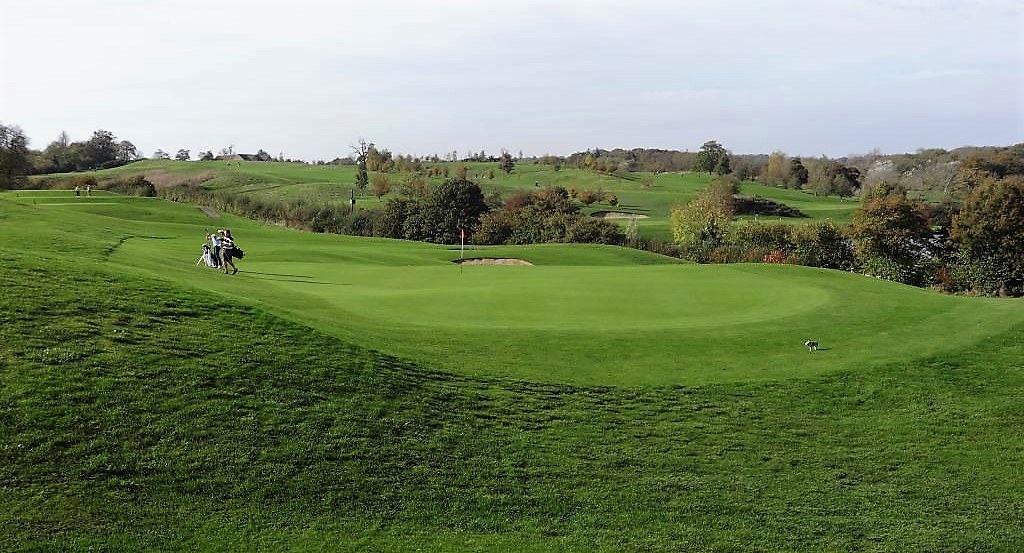
Another fairly short two-shotter, the third uses bunkers very well. One of the best attributes of treeless sites is there are no landmarks to help with judging distance. The right bunker is maybe a 240 carry. I knew it would be a difficult carry not because it looked to be the case, but because the first two holes gave me a firm message that all is not what it seems. If one successfully carries the bunker the hole opens a bit mainly because the view of the green is better. This is no small matter because the green has a pronounced right to left slope which wasn't a main feature of the first two greens. Again, not a major issue, but I think holding off on the obvious green slope (given the terrain) until the third hole was very shrewd.
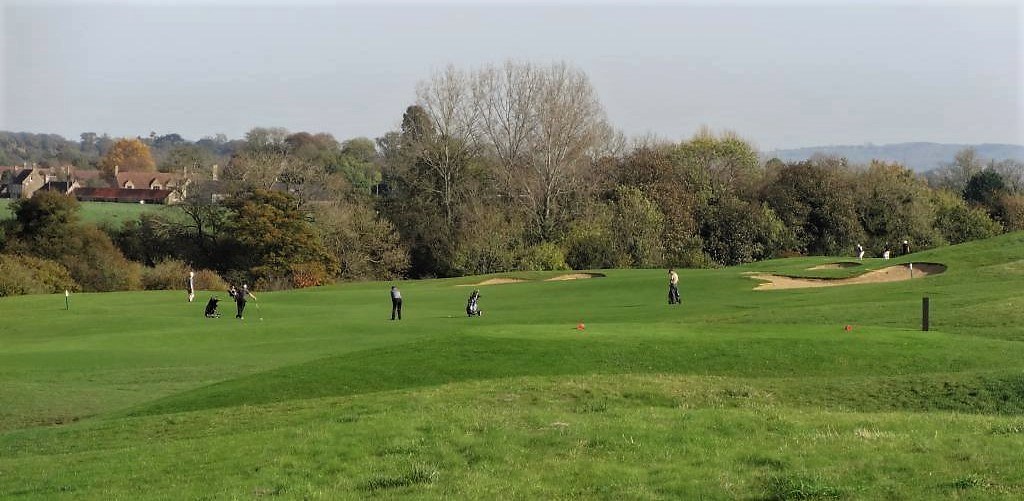
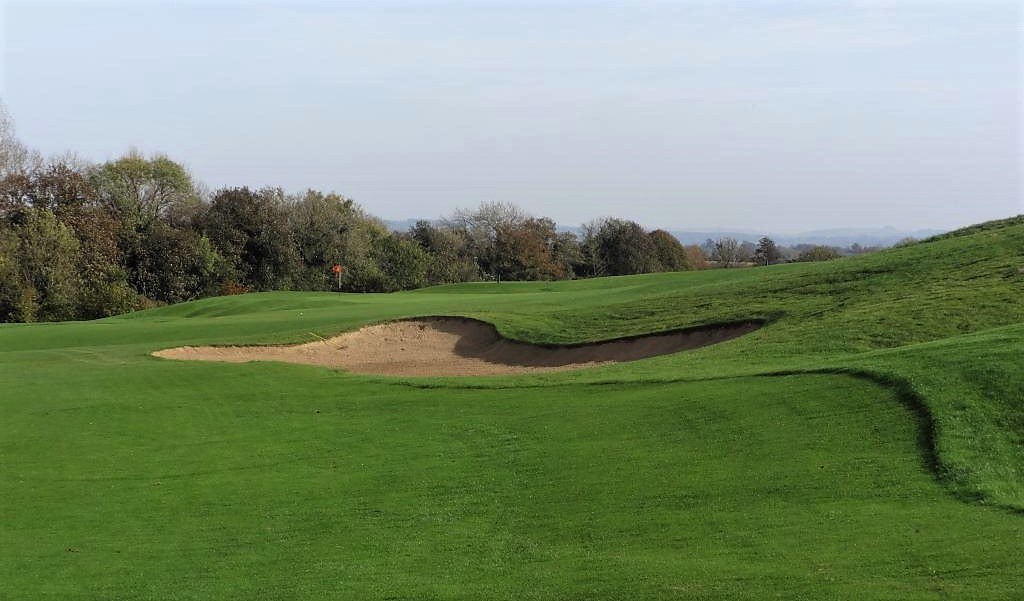
The one tick against the Orange nine is the conditioning. The course was already soft which leads me to believe it doesn't hold up well in winter. Many parkland courses are soft and make the mistake of leaving unnecessary bands of rough near greens making chipping a rather claggy, boring affair. This was not the case for the Orange nine. Despite the soft conditions, there is plenty of width and short grass areas around greens which made the course quite playable even though conditions were far from ideal.
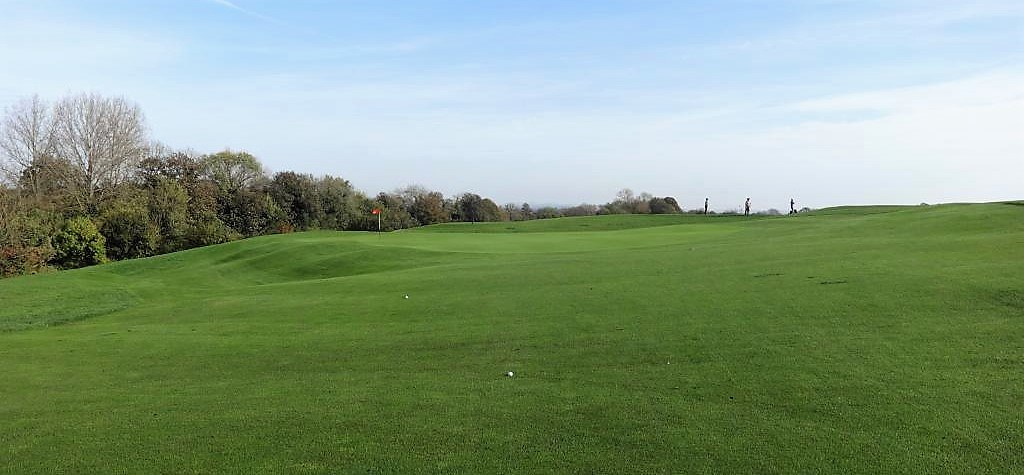
The next hole, a par three uphill into a bowl, as seen from the fifth fairway.
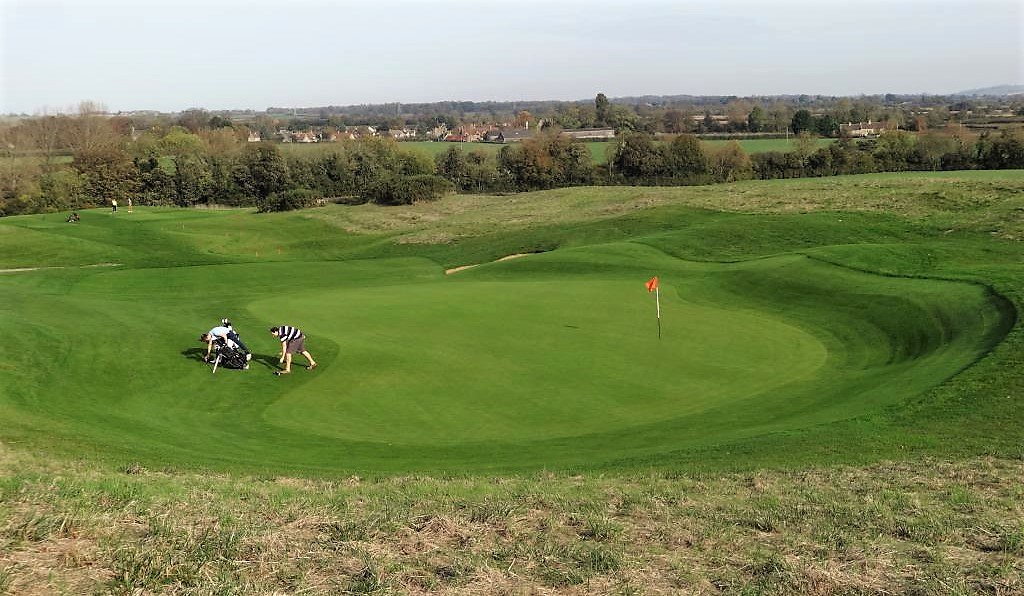
#5 may be my favourite hole on the side. Not a long par 4, but uphill (and today into the wind), the hole features a gaggle of centreline bunkers. Again, it is difficult to know what the carry is, but there are good options right and left. I think left will leave a better line into the green as the right side does have an element of blindness. Now then, we climb to a higher part of the property for the start of three banger holes, a long two-shotter and two three-shotters. #s 6 & 7 share a fairway which may be the widest expanse of short grass in England! My mate is dead between the two holes.

The most interesting aspect of the hole, however, is the raised green. What a bugger of a target for a 400+ yarder.
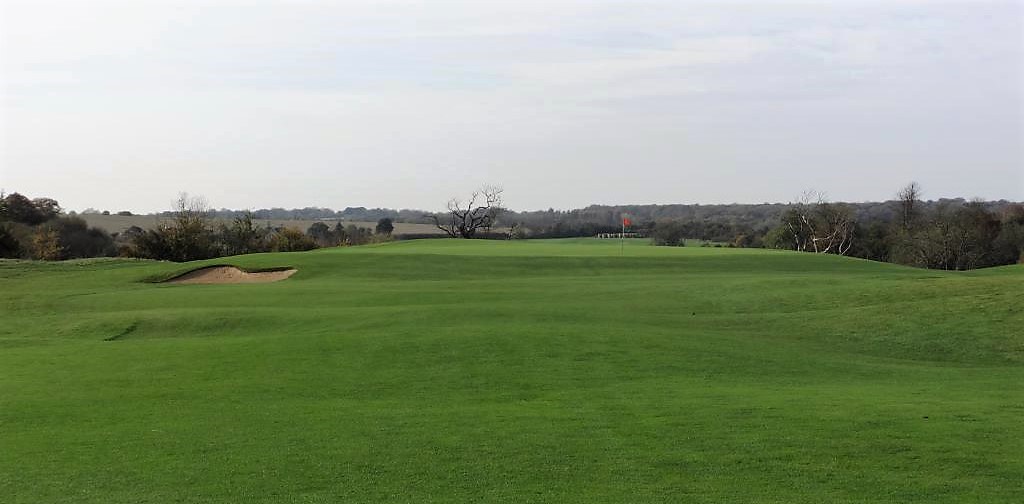
The seventh plays along a sharp drop and bunkers to the left then legs downhill left. It takes a very good drive to earn a view of the green...well beyond my capabilities. I suspect, short hitters will either have to flirt with the left side on their second or accept this hole as par 6.
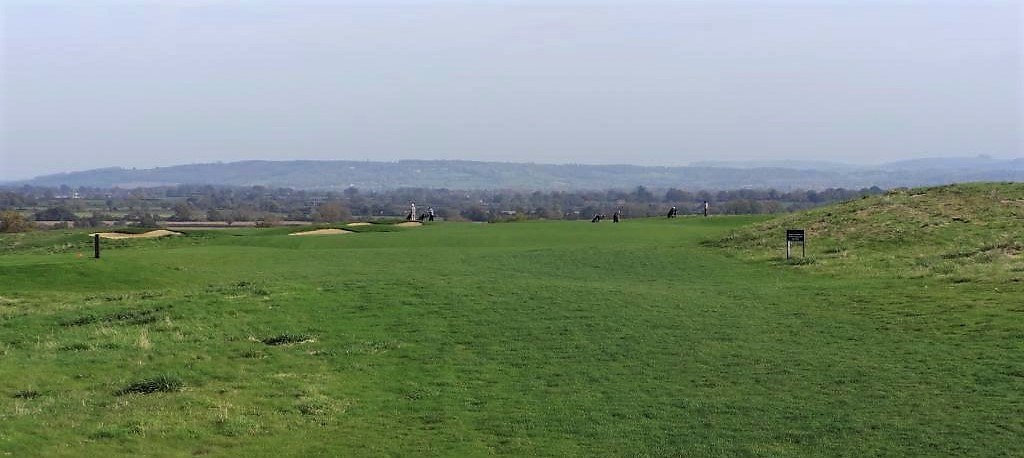
Well down the line, a large hidden bunker awaits the greedy golfer. There are more bunkers left making the bailout more interesting.
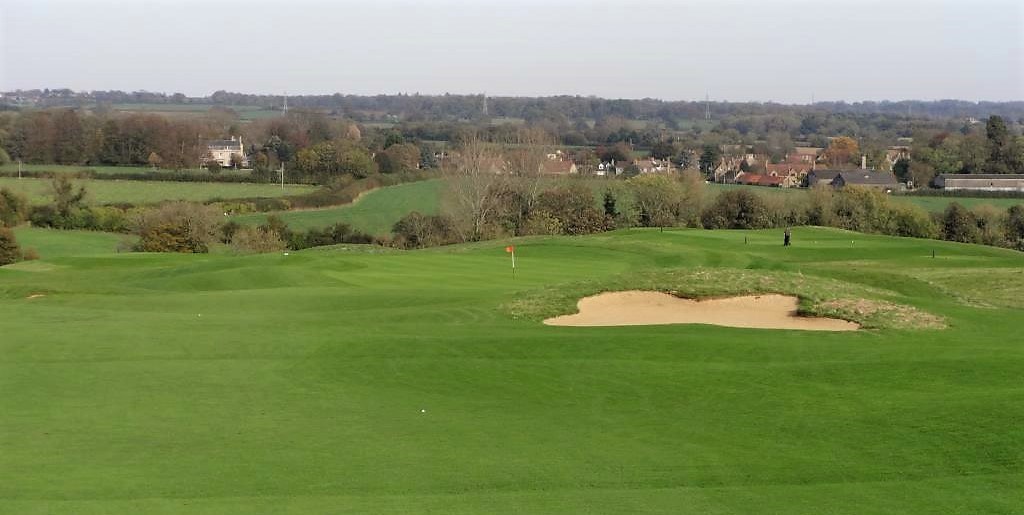
A closer look at the green reveals some bumps and rolls which are prevalent throughout the Orange nine.
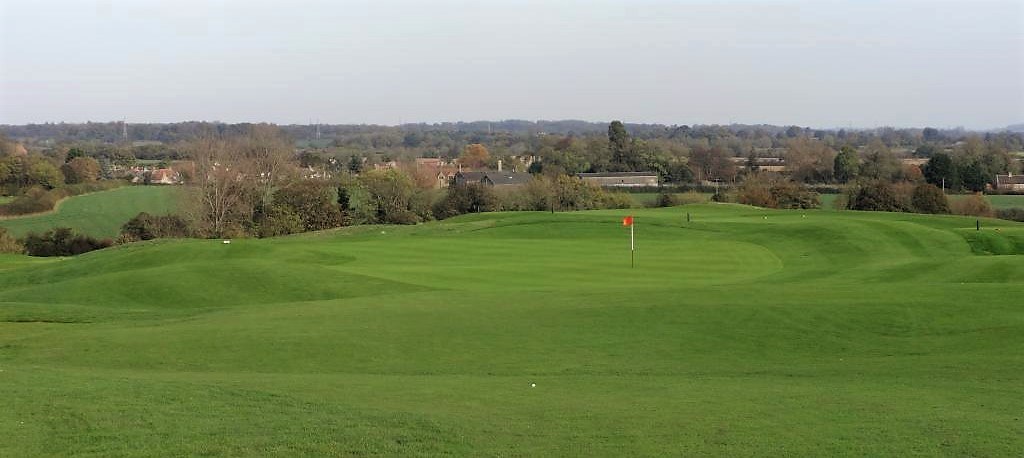
The final leg of this three hole 1500 yard juggernaut is the most difficult hole on the side. The entire hole is set between the high ground and the valley, on a sort of shelf. There is a nest of bunkers on the right side leaving some hope of a fairway lie if one falters in this direction, but the goal has to be
down up the left of the fairway. The second takes the golfer right around the slight bend

. Large bunkers protect the right and better side of approach. The long and narrow green slopes brutally right down the hill. The photo below is from the 7th tee.
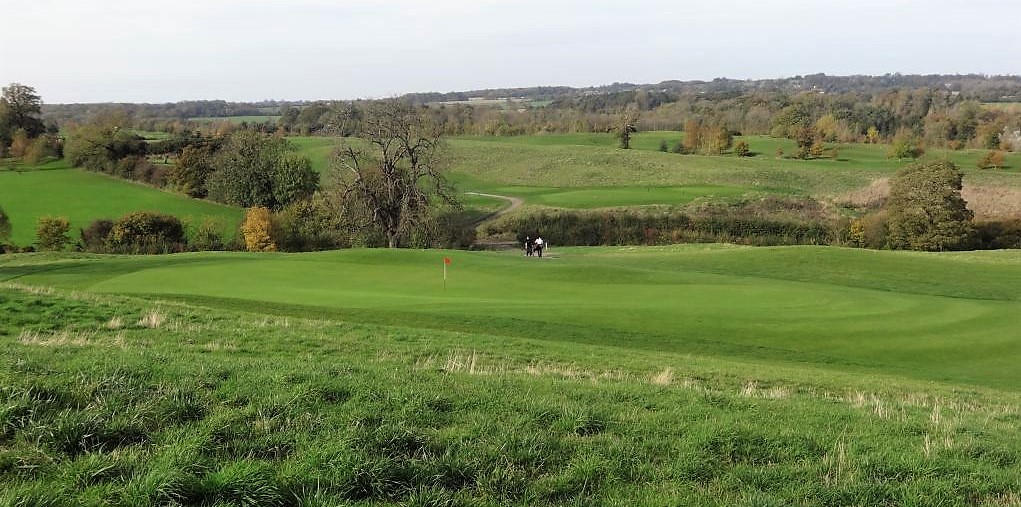
A very cool uphill par 3, the 9th has its green squeezed between a blind hollow and a quarry stone wall. Although the look of the hole is spoiled a bit by the gorse backing the wall, but then I am not at all keen on gorse.
We made the trek over to the Blue nine...a totally different style of design from the Orange. The Orange shoots at being a downland design (albeit with parkland turf); the Blue is full on 80s/90s design with water as a main feature. The turf is exactly the same, but the conditioning is superior to the Orange. I spose this disparity is due to the difference in maturity levels, but I am not certain. One thing which I find very troublesome about 27 or 36 hole complexes trying to offer different nine hole combinations is the hole numbering. Golf courses should be numbered 1 to 18. I detest seeing #19, 25, 31 etc. I would much prefer two 18s. Usually, there are natural pairings due to proximity or some other reason. Bottom line, four nines do not equal endless combinations; its a gimmick and the card is a mess. End of rant

While I don't think the Blue and Orange work in any fashion as a cohesive design, there are two other nines to play in seeking a better match. That said, I liked the Orange a lot as a nine holer and think Adrian Stiff has hit on a winner. I would like to see it in firmer conditions to gain a better insight as to how the the design functions. Since the club offers a 9 hole rate, I think the Orange merits a 1*. The course is well worth a go for tourists bombing around Bath who would like to get out for a few holes without breaking the bank. 2014
Previous stops on the Tour:
http://www.golfclubatlas.com/forum/index.php/topic,30926.0.html Kington
Next scheduled stop: Little Aston
Ciao